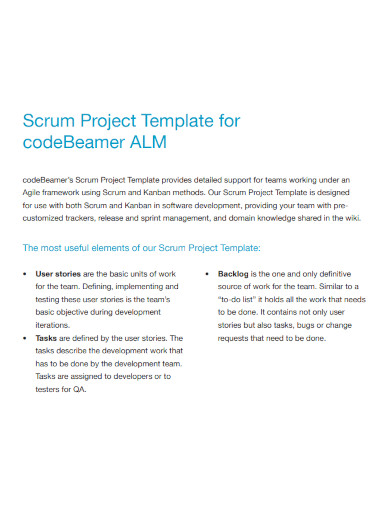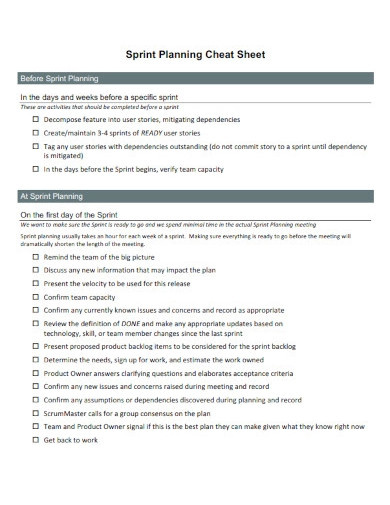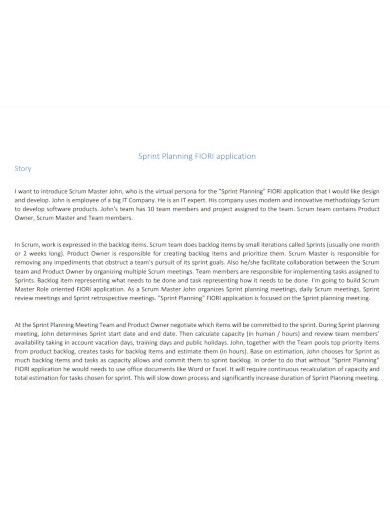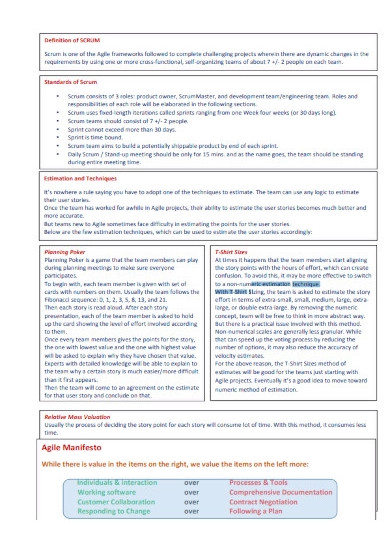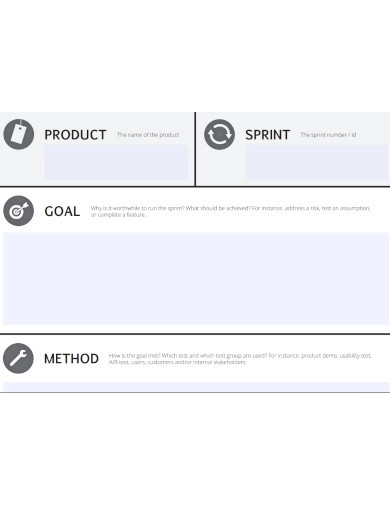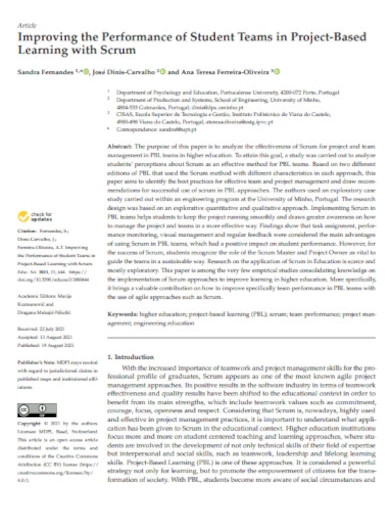Sprints are usually no more than one calendar month long. Some teams favor two-week sprints, but others prefer weekly sprints. Monthly sprints may make more sense for more complex projects, as they provide contributors more time to finish tasks and highlight results. For example, if you’re working on a website launch, you might divide the work into six two-week sprints. Hosting setup, WordPress theme installation, sitemap building, and content interviews/research might all be priorities for sprint one. Tasks like these can feel like drudgery that team members are eager to get out of the way so they can concentrate on the project’s true meat.
6+ Sprint Template Samples
Scrum teams create products through iterations, which break down large and complex projects into smaller, more manageable chunks. Sprints are a type of iteration. A Sprint is a short, time-boxed period in which a Scrum Team works to finish a specific amount of work. Sprints are at the heart of Scrum, and completing them correctly may help agile teams ship high-quality software more quickly and frequently. Working in Sprints, above all, allows teams to be more flexible and react to change more easily (and less expensively). The Agile Manifesto’s concepts are strongly matched with the concept of sprints.
1. Sprint Project Templates
2. Sprint Planning Cheat Sheet
3. Sprint Planning application
4 . Basics OF Scrum in Agile
5. Sprint Tracking Template
6. Sprint Goal Template
7. Education Performance Sprint Template
What Happens During a Sprint?
Let’s take a deeper look at what occurs within each Sprint carried out by the Scrum Team now that you understand what a Sprint is. The standard Sprints procedure in project management is as follows:
At the start of the sprint:
Every Sprint begins with a planning meeting known as the Sprint Planning Meeting. The software development team and the Product Owner organize the next sprint in particular during this meeting. They choose which Product Backlog Items will be processed throughout the Sprint. These items are moved from the Sprint Backlog to the actual Sprint Backlog. The Product Owner is in charge of selecting the Backlog Items for each Sprint. The Development Team has complete freedom in determining how to achieve these requirements.
During the sprint:
During a Sprint, the Daily Scrum is the most crucial activity. The Daily Scrum meeting lasts about 15 minutes on average. To avoid confusion, it always happens at the same time and in the same area. What is the Daily Scrum’s authority? It’s the Scrum Master this time, not the Product Owner. All other activities include the Product Owner, but the Daily Scrum is about something other than product development. It all comes down to how well the development team collaborates. As a result, the daily meeting focuses on what has been accomplished thus far and what will be accomplished next. The goal is for team members to share any prospective issues with one another in order to speed up the work process.
At the end of the sprint:
Throughout a Sprint, the team completes all of the tasks in the Sprint Backlog. When the Sprint draws to a close, the team gathers for a Sprint Review meeting. The team shows the Product Owner, as well as other important stakeholders, the product increment at this meeting (for example, the client). At this time, the Product Owner’s role is to ensure that all of the Sprint Backlog’s needs have been met. Those who aren’t will be returned to the Product Backlog and will be taken up by the team in one of the next sprints.
The team reassembles after the Sprint Review meeting for the Sprint Retrospective meeting. It’s the Sprint’s final meeting, and the goal is to strengthen the team’s collaboration. As a result, rather than focusing on the product, it focuses on the team and its requirements. The purpose of these meetings is to reflect on how the Sprint went and how the team can improve their work. A Scrum Team’s purpose is to consistently increase the quality of collaboration.
FAQs
What is a sprint in a scrum methodology?
The Scrum framework divides a large project into smaller, more manageable tasks called sprints. These project sprints are crucial to the scrum process because they allow the team to easily adjust changes. As soon as a project is received, the teams break it down into scrum project sprints and begin working on them in order of priority. A single sprint can be any length of time as long as it is less than four weeks. Two-week sprints, on the other hand, are the most usual.
How long is a sprint?
Scrum Teams usually set their Sprint length to two weeks. However, this value isn’t guaranteed. It may make sense to choose a longer or shorter sprint period depending on the specifics of your project, team capabilities, and a variety of other considerations.
Every agile Development Team’s dream is to create a product through a series of successful Sprints. Organizing Sprints is easier than it appears — but only if you follow the important do’s and don’ts of the process, participate in all Scrum ceremonies, and determine the appropriate Sprint length.
Related Posts
FREE 14+ Sample Music Concert Proposal Templates in MS Word | Google Docs | Pages | PDF
FREE 10+ Security Guard Contract Samples in PDF | MS Word
FREE 10+ Assurance Agreement Samples In MS Word | Google Docs | Apple Pages | PDF
FREE 10+ Option to Purchase Agreement Samples in MS Word | Apple Pages | PDF
FREE 26+ Curriculum Form Samples in MS Word | PDF
FREE 20+ Cleaning Service Proposal Samples in PDF | MS Word
FREE 29+ Sample Loan Application Form Templates in MS Word | PDF
FREE 10+ Event Venue Contract Samples in PDF | MS Word | Pages | Google Docs
FREE 10+ SBAR Samples in PDF | DOC
FREE 12+ Music Band Contract Templates in PDF | MS Word
FREE 10+ HVAC Maintenance Contract Samples in PDF | MS Word
FREE 10+ Social Media Marketing Contract Samples in MS Word | PDF
FREE 10+ Wholesale Assignment Contract Samples in PDF
FREE 18+ Financial Proposal Samples in PDF | MS Word | Google Docs | Pages
FREE 10+ Feasibility Study Samples in PDF

